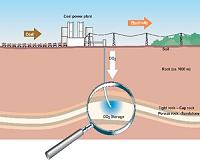 |
Berlin, Germany (SPX) Sep 13, 2010 Since their discovery in 2008, a new class of superconductors has precipitated a flood of research the world over. Unlike the previously familiar copper ceramics (cuprates), the basic structure of this new class consists of iron compounds. Because the structure of these compounds differs from the cuprates in many fundamental ways, there is hope of gaining new insights into how the phenomenon of superconductivity arises. In cooperation with an international research group, researchers from Helmholtz-Zentrum Berlin (HZB) have now discovered a magnetic signature that occurs universally among all iron-based superconductors, even if the parent compounds from which the superconductors are made possess different chemical properties. Superconductors are generally produced by "doping" so-called parent compounds, which means introducing foreign atoms into them. There is a strong correlation between magnetism and superconductivity here - both being properties of solids. Conventional superconductors, such as those used in MRI machines in hospitals, do not like magnetism because it disturbs the interactions that lead to superconductivity within the crystal. It is quite a different story for the celebrated high-temperature superconductors, such as cuprates and iron-arsenic compounds. In these cases, the magnetic forces actually help, even promote the onset of superconductivity. These compounds feature magnetic orders which, if they occur in a crystalline structure, are a telltale sign that the material is suitable to be a high-temperature superconductor. With the new iron-based superconductors, it turns out that the symmetry of a magnetic order corresponds exactly to the symmetry in the superconductivity signal. Dimitri Argyriou (HZB) and his colleagues have produced iron-tellurium-selenium crystals and determined their chemical composition using X-ray and neutron diffraction. They measured the magnetic signals in the crystals by performing neutron scattering experiments on the research reactor BER II of HZB and on the research reactor of the Institute Laue-Langevin in Grenoble. They discovered that the symmetry of the magnetic order is significantly different from that of other iron-based parent compounds, such as iron-arsenic compounds. Yet, surprisingly, this difference has no impact on the development of superconductivity as a property. It has been detected that the magnetic signal caused by superconductivity - often referred to as the magnetic resonance - has the same symmetry as that of the magnetic order. And this is the same in all iron compounds, and apparently follows a universal mechanism that causes superconductivity for all of these materials. Dimitri Argyriou describes this property as follows: "Going by what we know about the magnetic order of iron compounds, the iron-tellurium-selenium materials ought not to exhibit any superconductivity. But the opposite is the case: Despite the differences in magnetism, the signature of their superconductivity is the same. If we were now to understand how superconductivity arises in light of different starting conditions, then we could perhaps develop materials that are superconductive at even higher temperatures."
Share This Article With Planet Earth
Related Links Helmholtz-Zentrum Berlin Powering The World in the 21st Century at Energy-Daily.com
 China-US collaboration on clean energy research
China-US collaboration on clean energy researchSan Francisco (AFP) Sept 8, 2010 Chinese and US scientists will be collaborating on research into clean energy with millions of dollars in backing by the two nations, a US national laboratory announced on Wednesday. Lawrence Livermore National Laboratory in California said it was part of a US team that will receive 25 million dollars during the next five years from a joint US-China Clean Energy Research Center. The team ... read more |
|
| The content herein, unless otherwise known to be public domain, are Copyright 1995-2010 - SpaceDaily. AFP and UPI Wire Stories are copyright Agence France-Presse and United Press International. ESA Portal Reports are copyright European Space Agency. All NASA sourced material is public domain. Additional copyrights may apply in whole or part to other bona fide parties. Advertising does not imply endorsement,agreement or approval of any opinions, statements or information provided by SpaceDaily on any Web page published or hosted by SpaceDaily. Privacy Statement |